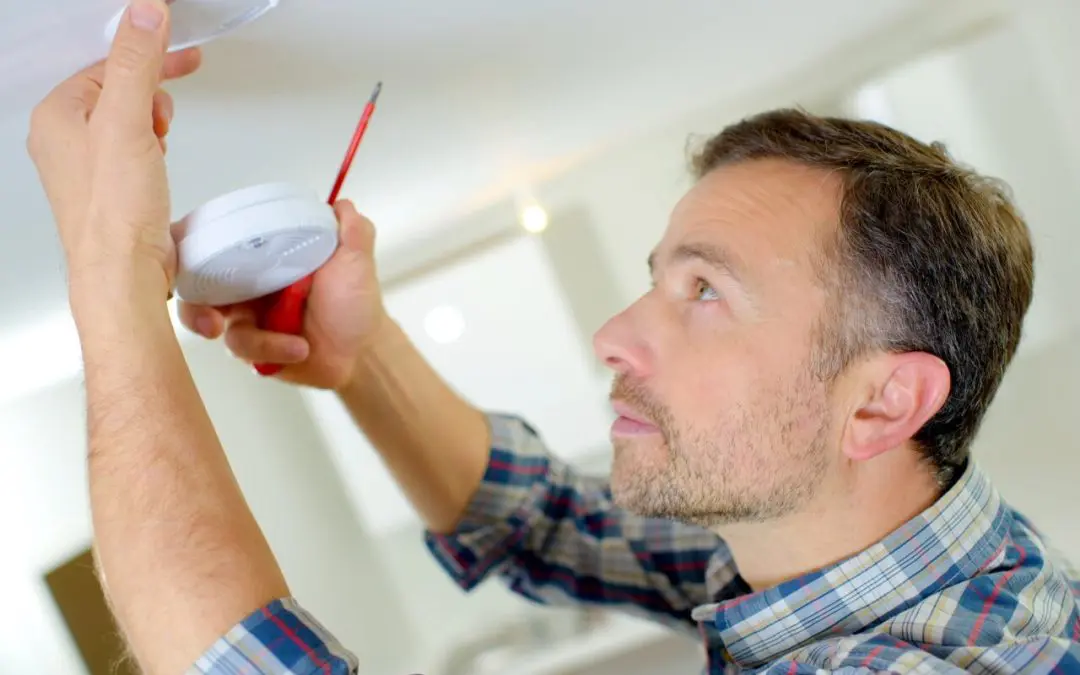Smoke detectors are an essential safety device for any home. They detect smoke and alert occupants of a possible fire. Knowing how smoke detectors work, where to install them, and how to maintain the devices is helpful. Let’s look at each of these topics to understand the importance of smoke detectors in the home and be sure your household has adequate protection against fire.
How Smoke Detectors Work
Smoke detectors use ionization or photoelectric technology to detect smoke particles in the air. Ionization-based smoke alarms have a small chamber filled with radioactive material that creates an electrical current when no smoke is present. When smoke enters the chamber, it disrupts this current and triggers an alarm. Photoelectric-based smoke alarms use a sensor focused onto a light-sensitive surface within an enclosed chamber; when smoke particles enter this chamber, they block the light from reaching the sensor, which activates the alarm.
Why Smoke Detectors in the Home are Necessary
Smoke detectors are essential because they provide early warning of a fire in your home so you and your family can get out safely. The National Fire Protection Association recommends installing both types of detectors (ionization and photoelectric) as they respond differently to different types of fires (slow smoldering vs. fast flaming). Test all smoke detectors monthly for proper operation and replace them every ten years.
Where to Install Smoke Detectors in the Home
Smoke detector placement is important to ensure an early warning. Install detectors strategically so no matter where a fire breaks out in your home, you will be alerted quickly enough for everyone to escape. Install at least one device on every level of your home (including basements), outside all sleeping areas, and inside bedrooms. Additional units will be necessary for rooms with vaulted or cathedral ceilings.
Prevent False Alarms in the Kitchen
Homeowners often deal with false alarms caused by steam and cooking odors that unnecessarily activate the detector’s sensors. To reduce the chance of this happening, choose smoke detectors designed for kitchens. These devices feature special photoelectric and electrochemical sensors that help prevent false alarms.
Good ventilation around cooking areas can help reduce false alarms as well because air movement helps disperse steam quickly, reducing the chances of setting off a smoke detector nearby.
How to Maintain the Devices
Proper maintenance is necessary for keeping smoke detectors in the home functioning correctly.
- Change the batteries in each detector every six months.
- Check the devices regularly for dust that can interfere with their sensors.
- Never paint over smoke detectors.
- Replace the device itself every ten years.
A Word About Carbon Monoxide Detectors
While smoke detectors alert you in case of fire, CO detectors can protect you from deadly carbon monoxide poisoning. If you have an attached garage, a fireplace, or gas or oil heat, place a CO detector on each floor and outside of the bedrooms.
Having smoke detectors is one part of being prepared for a potential fire. Creating an emergency escape plan is just as important. Knowing what to do in an emergency can keep you and your loved ones safe. Work with your family to create an escape plan from your home. Find two exits from each room, map an escape route, and practice it. Your family will be more prepared if a fire breaks out in your home.
Aztec Home Inspections provides inspection services in Waynesboro, Harrisonburg, Charlottesville, and surrounding areas. Contact us to schedule an appointment.

